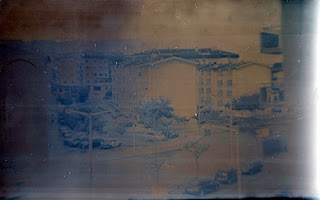If you are a purist, you want to make photos like normal ones, professionally, with the best possible look, Photography in the sense that it is a very accurate reproduction of the reality, follow the rules, put the exact quantity of components, control the temperature, measure the time with a chronometer, follow the instructions without any variations, unless to correct some not very well exposed negative but be very accurate and make a standard already established for someone who made a lot of shit before he came to that standard procedure.
But that is, for me, no hobby, it is work, hard work and responsible work. Yesterday I refused a work that would take some 2 hours and I would win 40 euro. It was a programming issue, the point is, when you think the client will be satisfied, no. He always discover some point where it doesn't make what he wants and instead of two hours you take the whole week for 40 euro. No, thanks! I made the following proposal: I send you the hard code, the part that I discovered and you may use as much as you want for several sites and make good money for 500 euro. He refused and is looking for someone else who makes it for 40 euro.
Here in this blog, I don't expect for payment, it is my hobby, I am experimenting like many others and sometimes it happens that I discover new things or a new manner to make things work.
The main challenge is to make photos or some kind of photos, without standard commercial products thought for Photography. I even try to make my own cameras and the sensible surfaces using normal materials or products I can bye at the corner.
Now, to the point: why using hair dye for C41 films if the results are not really color but only vestiges of it? In fact, you have on the film dyes, but developed differently, giving almost black and white but no silver is present anymore because it was bleached and fixed. What we have is a mixture of dyes forming a strange B&W picture. Let us take this example, already shown before:
 |
| Path to the river |
Here we see vestiges of color and they may be there if we «push» them. In normal color photography you can also change the amount of Red, Green and Blue. So, let us make the same here and see what is the best we can do. Using the software GIMP, I could extract the folloing picture that I consider more close to the reality.
 |
| Pushing with more red and blue |
But let us assume we are only looking for a good artistic picture, not real, but only pleasant and when people lok they say, «Wow! How is this picture possible?». Then, using tricks that you also can make with normal digital pictures, it is also possible to make things like this:
 |
| Violet velvet path |

















